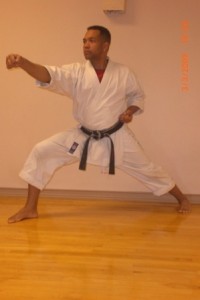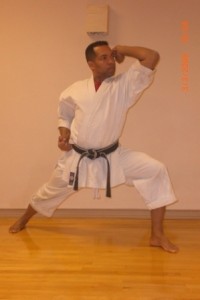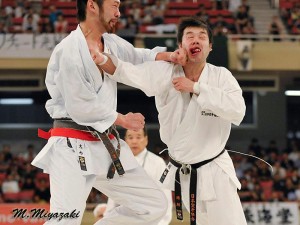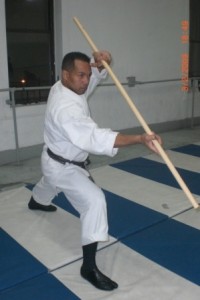 Kihon covers the training of all the various stances, kicks, blocks, strikes, punches and body movements that are used in kata and kumite. Techniques can be practiced individually or in combinations to improve agility and fluidity of movement.
Kihon covers the training of all the various stances, kicks, blocks, strikes, punches and body movements that are used in kata and kumite. Techniques can be practiced individually or in combinations to improve agility and fluidity of movement.
One of the key objectives of practicing kihon is to gain an understanding of how your body moves in order to generate as much power as possible with the minimum amount of effort. This power is then applied to the various defensive and offensive techniques used in kata and kumite. Also, understanding your own body mechanics and how to control them, is the first step towards understanding your opponent’s movements and ultimately controlling them.
 Though Katas are not that inherent in classical karate, we still make limited use of these predetermined arrangements or patterns to further understand angle and direction of striking vital points in the body. In this tradition there are only 3 basic forms or kata ranging from beginner to advanced; one advanced form and one master form. Each kata teaches various principles of movement, rhythm and dexterity but little emphasis on self defense. Also, within the moves of the different kata are various exercises for improving breathing, balance and accuracy.
Though Katas are not that inherent in classical karate, we still make limited use of these predetermined arrangements or patterns to further understand angle and direction of striking vital points in the body. In this tradition there are only 3 basic forms or kata ranging from beginner to advanced; one advanced form and one master form. Each kata teaches various principles of movement, rhythm and dexterity but little emphasis on self defense. Also, within the moves of the different kata are various exercises for improving breathing, balance and accuracy.
Kumite (bare hand sparring) is where the techniques practiced in kihon and kata are applied against an opponent. There are different formats of kumite designed for developing different skills, and appropriate for practitioners of different levels.
In the most basic and controlled forms (kihon kumite), everything is predetermined and the attacker and defender each know exactly which techniques will be used and when. Then, at the opposite end of the spectrum is jiyu kumite (freestyle sparring), where techniques are exchanged freely. This jiyu-kumite forms the basis for competition karate if such interest arises.
Weapons Kata and defense weapons are the traditional predetermined forms or patterns of karate. In the Shodoshima tradition, there are only 2 forms or kata per weapon ranging from beginner to advanced. Each kata teaches various principles of movement, rhythm and dexterity. Also, within the moves of the different kata are various exercises for improving breathing, balance and coordination.
10 th KYU – WHITE BELT
I. REI-HO (How to bow)
1) SHIZEN REI (up right)
2) SEIZA REI (two instep)
3) SHINZEN REI (Kotodama)
4) SHI REI (Acknowledgment)
II. KAMAE GATA (Posture routines)
1) SEIZA NO KAMAE (two insteps)
2) HIZA NO KAMAE (one knee stance)
3) ZEN KUTSU NO KAMAE (Front Leaning posture)
4) KATATE NO KAMAE (guard front stance)
III. TSUKI NO KATA (Still then in 9 Steps front and backwards with ¾ punches)
1) JODAN TSUKI 2) CHUDAN TSUKI 3) GEDAN TSUKI
IV. KERI KATA (l & r Front Kamae) – Jodan, Chudan & Gedan
- MAE GERI
- YOKO GERI
- MAWASHI GERI
V. UKEMI GATA TAIHENJUTSU = Falling And Body Escape Methods
1) ZENPO KAITEN (Forward Roll)
2) KOHO KAITEN (Backward Roll)
3) SOKUHO KAITEN (Side Roll)
4) OHTEN (Cartwheel)
Philosophical interpretation of the beginner’s mind:
“Pure and without knowledge” The student begins with a clean slate. Keep an open mind at all times.

